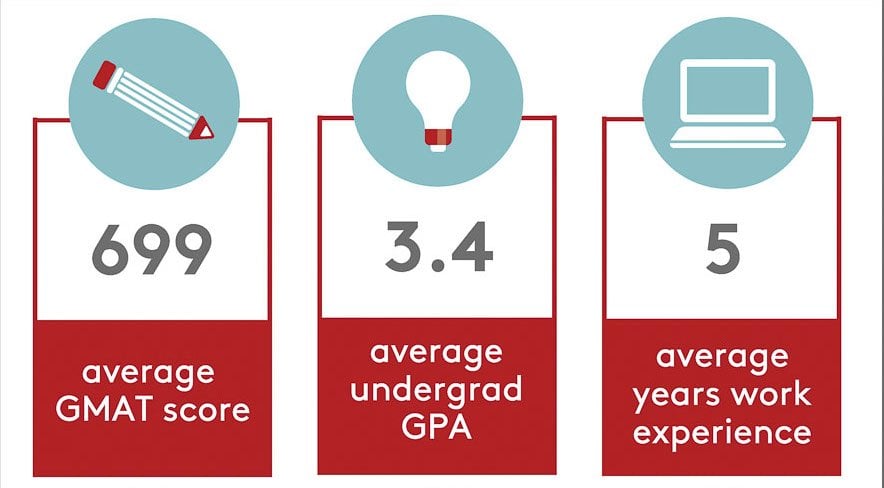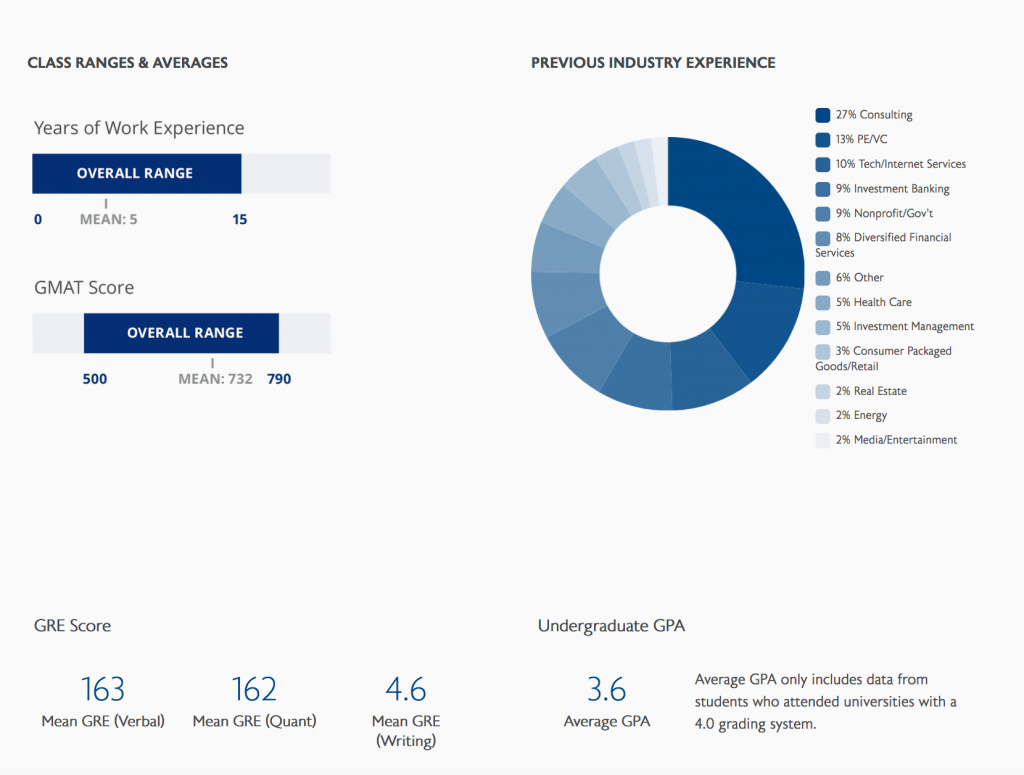The Class of 2020 Begins at Yale SOM

In late August, the newest group of Yale School of Management Master of Advanced Management, Master’s Degree in Global Business, and Society (GBS), and Master’s Degree in Systemic Risk students officially began their Class of 2020 journey.
Yale SOM deans and faculty members introduced the 120 one-year Master’s students at the Edward P. Evans Hall’s Zhang auditorium. Formally introducing the new students, Deputy Dean Anjani Jain said:
“You are entering the school at a time of exciting transition as Dean Kerwin Charles takes the helm. “Your presence here is a mark of your ambition to make a lasting contribution to both private industry and the public good.”
MBA graduates that are members of the Global Network for Advanced Management are welcome to enroll in the Yale SOM Master of Advanced Management. The Master’s Degree in Global Business and Society is typically geared towards younger students that may not have an MBA yet, or are currently members of the Global Network for Advanced Management.
Andrew Metrick, the Janet L. Yellen Professor of Finance and Management, also spoke at the welcome event, telling new Yale SOM students, “It’s been a fantastic experiment that has now grown into a core part of the school.”
Valentina Antill, Managing Director at Citigroup and ’94 alum, also addressed students at the event, starting off the introductory week at Yale SOM. Students also participated in workshops, tours, team projects, and more.
For more information on the Class of 2020 and details about Yale SOM Master’s options, click here.
Applications Down 4.5 Percent at HBS, But Applicant Quality Remains High

The release of the Harvard Business School (HBS) Class of 2020 profile statistics last week revealed that the Boston school—like many of its U.S. peers—saw a decrease in overall application volume, but median GMAT score and GPA remained unchanged from the prior year at 730 and 3.71 respectively. The admit rate, 11 percent, was also unchanged year over year. So though he was working from a smaller pool of 9,886 applicants (down from 10,351 last year), Managing Director of Admissions and Financial Aid Chad Losee did not sacrifice on quality.
Harvard Business School Application Slips for Class of 2020
HBS is one of many leading U.S. business schools to see application volume drop off in this most recent application cycle. A strong economy paired with concerns among international applicants about potential student and work visa challenges made for even more dramatic declines at schools like UNC Kenan-Flagler and Georgetown’s McDonough School, which reported double-digit drops of 18.3 and 16.2 percent respectively. Yield at HBS–which is to say the percentage of admitted students who chose to enroll–slipped from 91 to 90 percent. Still, HBS remains far and away the leader in this statistic.

Applications are down 4.5 percent at HBS, but declines across other U.S. MBA programs was much more apparent.
At HBS, the 4.5 percent application volume decline was spread between both international and domestic applicants. International students make up slightly more of the HBS class this year, 37 percent compared to 35 percent last year. They hail from 69 countries as compared to 70 for the Class of 2019.
Another interesting development is the increase in GRE takers among admitted students. A record-setting 15 percent of the incoming class got there on the strength of their GRE scores, up from 12 percent last year. It’s only in the past couple of years that schools have begun to disclose the percentages of students who submit GRE scores in lieu of GMAT scores, which used to be the gold standard. But at HBS and elsewhere, a growing number of applicants seem to be taking schools at their word that they are indeed test agnostic.
There were not a lot of major shifts elsewhere in the statistics for the newest HBS class. The percentage of women is down by one point, slipping from 42 to 41 percent. U.S. ethnic minorities remained constant year over year at 26 percent of the class. The average age also remains unchanged at 27.
Applicants from Private Equity, Tech, Increase
In terms of prior work experience, there were again few shifts from the prior year. Slightly more students came in from private equity/venture capital (16 percent, compared to 15 percent last year), tech (also 16 percent, up from 15), and government/non-profit (7 to 8 percent). These upticks correlate with small declines in students from industrial/heavy manufacturing and other services. Military veterans make up 5 percent of the Class of 2020, on par with the Class of 2019.
And in terms of what students in this year’s entering class studied as undergraduates, again HBS showed little fluctuation. Economics/business majors make up the largest portion—46 percent, up from 45 percent last year. STEM undergrads also increased one percentage point, from 36 to 37 percent. Humanities/social science undergraduates made up just 17 percent of the class, down from 19 percent last year.
To view HBS’s complete Class of 2020 profile, click here.
This article has been edited and republished with permissions from our sister site, Clear Admit.
Berkeley Welcomes Record Number of MBAs in for Class of 2020

Last week, UC Berkeley’s Haas School of Business unveiled stats for the incoming students that comprise its full-time MBA Class of 2020.
With 291 full-time MBA students (along with 276 evening and weekend students), the Berkeley Class of 2020 is larger than any before.
The new class one of the most academically accomplished in school history. Average GPA for this year’s first-year class is 3.66, off just .05 from last year’s. But an increase in average GMAT offset the tiny backslide in GPA. At 726, it moved up one point higher than last year’s incoming class.
In terms of professional experience, Haas students come from various backgrounds. About a quarter of the students come from the consulting industry, and another 20 percent come from banking/financial services backgrounds. The industries drawing the third-, fourth-, and fifth-most Haas grads are high tech (10 percent), nonprofit (9 percent), and healthcare/pharmaceutical/bio (7 percent). In addition, 5 percent of the incoming class has military experience.
The percentage of women in Haas’s incoming class is also up over the previous year, something we’ve also seen this year at Northwestern’s Kellogg School, Duke’s Fuqua School, and USC Marshall, among others.

About 43 percent of the incoming Berkeley Class of full-time MBAs are women—a 3 percent increase. International students from 30 countries make up around 34 percent of the class, down from 39 percent last year. Here, too, Haas is not alone. Many U.S. schools have shared, in both in published class profiles and informal conversations, that international application volume was down, or at best, flat year over year.
Former Haas Dean Richard Lyons stepped down in June after 11 years with the school, a role in which he raised more money than any prior dean and oversaw the construction of Connie & Kevin Chou Hall. The addition of the new building helped make it possible to expand the Haas class, an effort Lyons championed. He and other supporters viewed it as a way to help ensure that Haas has enough graduates to command attention from the world’s top recruiters without compromising the intimacy and culture.
“Part of the reputation of the school is a function of its scale, and there are times where you are just not at the right reputational scale. You’re too small,” he explained in a 2017 interview with Clear Admit.
“It’s a super intimate experience—there’s no question about that—but target companies want to go to a place where there are enough people graduating that they can send a team of recruiters, for example. If you are too small you are below the threshold.”
Ann Harrison, a renowned economist and member of the faculty at the University of Pennsylvania’s Wharton School, will serve as Haas’s next dean. Harrison begins her term on January 1, 2019. Professor Laura Tyson, the current interim dean since Lyons left, returns to her prior faculty positions next year.
This article has been edited and republished with permissions from Clear Admit.
New Johnson Cornell MBA Class of 2020 Features More Women and URMs

The Cornell MBA Class of 2020 kicked off the fall semester in style earlier this month at the Johnson Graduate School of Management. To formally welcome the new recruits to the Cornell community, Johnson Business Feed revealed a comprehensive class profile, shedding light on the students who make up the incoming class.
The Johnson Cornell MBA Class of 2020

There are 280 students in the incoming students (up just slightly from last year’s 277), and they boast an average GMAT score of 699 and an average undergrad GPA of 3.4. The figures are pretty similar to the Class of 2019, where average GMAT score was 700 and average GPA was 3.36. Average work experience remains constant year over year, with incoming students bringing five years’ experience in the workforce to bear on their business school journey.
Admissions Director Judi Byers and her team have been working hard to recruit more women to Johnson, and their efforts are paying off. Women make up a full third—33 percent—of this year’s incoming class, a six-point increase over last year. The percentage of underrepresented minorities (URMs) in the Class of 2020 also grew from 12 percent last year to 15 percent with this new class. In total, U.S. minorities make up 32 percent of the new class. That figure includes Asian American, African American, Native American, and Hispanic American students.
International students, though, dipped. International students made up 34 percent of last year’s incoming class, but this year they account for only 27 percent. Johnson, like many of its peer schools, experienced a drop-off in international application volume amid widespread concerns around possible U.S. immigration and work visa restrictions. Still, they will bring perspectives from 40 different countries to the Johnson classroom. That’s up from 38 countries represented in the second-year class. There are also fewer military veterans in this year’s class—7 percent as compared to 11 percent for the Class of 2019.
In terms of undergraduate majors, former business students coming in first, making up 29 percent of the class. Social science majors make up the second largest group at 21 percent. This was followed closely by engineers, who comprise another 20 percent of the class. Humanities majors are in the minority: They represent just 10 percent of the Class of 2020.
As for previous work experience, the vast majority of the incoming class—44 percent—falls into the category of “other.” According to Johnson, this includes students who have worked in the real estate, energy, nonprofit, and transportation industries, among others. Roughly a quarter of the class—23 percent—come from finance, and another 17 percent are former consultants.
On Instagram post, Byers shares that the Class of 2020 got into the spirit of things during pre-term week, adding to the school’s shared wall of values and expectations. Community, impact, collaboration, excellence, and teamwork were among those she highlights.
Click here to view the complete Cornell MBA Class of 2020 profile.
This article has been edited and republished with permissions from Clear Admit.
Wharton Welcomes its MBA Class of 2020

With students in the Wharton MBA Class of 2020 settling on campus, Deputy Vice Dean Maryellen Reilly took to the school’s MBA Admissions Blog to welcome the new class.
The Wharton MBA Class of 2020
Although application volume is down, the average GMAT score rose to the school’s previous record high of 732. This score matched the Wharton MBA Class of 2017.
“This class is an impressive collection of leaders from all walks of life, backgrounds, nationalities, industry experiences, and ambitions,” Reilly writes. “These newest members of the Wharton community bring with them a wide-range of perspectives to enrich their shared experiences both in and outside of the classroom.”

Application volume fell by 6.7 percent, dropping from 6,692 to 6,245. But here Wharton is in good company.
It is difficult to find a leading U.S. school reporting that applications were increasing measurably year over year. The vast majority are sharing that numbers are decreasing, or at best remaining steady.
Perhaps one of the biggest shifts between last year’s class and this year’s is the uptick in humanities undergrads, increasing to 45 percent from 41 percent. Students with STEM backgrounds make up another 29 percent of the class, trailing those in business, at 26 percent.
Around 33 percent of the incoming class is international, increasing from 32 percent last year. Although students this year hail from 80 different countries, compared to just 65 one year ago. U.S. students of color make up another third of this year’s class, not changing from last year.
There are 862 students in the Class of 2020, one shy of the previous class. The percentage of female students slipped one point, to 43 percent.
In terms of prior work experience, former consultants outnumber all others by a considerable margin, making up 27 percent of the class, up from 26 percent last year. The next-largest group, at 13 percent, comes from private equity/venture capital, with 10 percent of tech students following closely.
For the whole view of the Class of 2020, check out the Wharton profile here. As well, get familiar with the school’s MBA programs here.
This article has been edited and republished with permissions from our sister site, Clear Admit.
GMAT Scores, International Students Jump at NYU Stern

Last week, the NYU Stern School of Business shared a preliminary profile of its Class of 2020. Even amid some declines, the school showed gains in the diversity of its class and added a few points to the average GMAT score for incoming students.
This year saw 3,781 applicants—down from 3,927 for the Class of 2019. Among the new applicants, 876 were admitted (23 percent) and a total of 375 enrolled. Last year, 822 applicants were admitted (21 percent), yielding 402 enrolled students.
Although the percentage of female students dropped slightly from the previous year (38 to 35 percent), the Class of 2020 is more global than the Class of 2019. International students increased from 37 percent last year to 39 percent, even as overall international MBA application volume to U.S. schools faltered.
“International applications were down about 10 percent this year, but they still represent about half of total applications, so we had a very strong pool of applications from which to admit,” an NYU spokesperson says.
The percentage of minority students held steady at 29 percent—the same as the previous year. But of those, 13 percent this year are underrepresented minorities (U.S. citizens and permanent residents who identify as African American/Black, Hispanic, or Native American/Alaskan Native), up 2 percentage points over the Class of 2019.
The average GMAT score for incoming students this year increased to 717—a three-point gain over the previous class. However, the median GMAT maintained the same score as the previous class, sitting at 720. At the same time, applicants opting to submit GRE scores instead of GMAT scores jumped from 12 to 19 percent, while the average GPA slipped slightly from 3.48 to 3.45.

The NYU Stern Class of 2020 sported a 717 GMAT average; three points higher than the previous class.
The Class of 2020 has a diverse educational background. Approximately 29 percent of students studied business as undergrads, more than any other major. Another 20 percent of the incoming class have degrees in engineering, math, and science. Economics, humanities, and social sciences majors make up the rest of the class, totaling 18 percent, 17 percent, and 16 percent, respectively.
Stern also continued its efforts to recruit military veterans and active duty service members, including through the Fertitta Veterans Program. Now in its second year, the program underwrites more than half of the tuition bill for approximately 20 incoming students annually. Veterans and active duty service members comprise 7 percent of the Class of 2020, similar to last year.
The average work experience among incoming students increased from 4.9 years for the Class of 2019 to to 5.3 years this year. More than a quarter—26 percent—of the Class of 2020 comes in with previous experience working in financial services, and another 13 percent come from consulting. The three next largest feeder industries are technology, entertainment/media, and military/government, making up 9 percent, 7 percent, and 7 percent, respectively. With regard to post-MBA career aspirations, members of the Class of 2020 are increasingly interested in consulting, technology, entrepreneurship, and healthcare.
Click here or more information on the NYU Stern Class of 2020.
